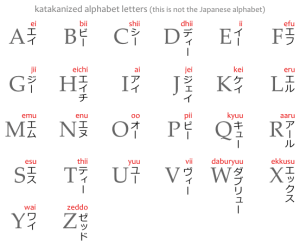
How to Learn the Japanese Alphabet: Tips for Success
Contents - How to Learn the Japanese Alphabet
Learning the Japanese alphabet can be a rewarding journey for those interested in the language and culture of Japan. Unlike many languages that use a single script, Japanese employs three distinct alphabets: Hiragana, Katakana, and Kanji. This article will provide helpful tips on how to effectively learn the Japanese alphabet, focusing on each of these writing systems.
Understanding the Japanese Alphabet
Before diving into learning strategies, it’s essential to understand the three main components of the Japanese writing system:
1. Hiragana: This is a phonetic alphabet consisting of 46 basic characters. Each character represents a specific syllable, making it foundational for sentence structure in Japanese. Hiragana is primarily used for native Japanese words, grammatical functions, and particles.
2. Katakana: Also a phonetic alphabet with 46 characters, Katakana is used mainly for foreign words, onomatopoeia, and the names of plants, animals, and minerals. It is often seen in menus, advertisements, and other contexts where foreign influence is present.
3. Kanji: These are logographic characters borrowed from Chinese. Each Kanji represents a word or a part of a word. There are thousands of Kanji characters, but approximately 2,000 are necessary for basic literacy in Japanese. Learning Kanji can be more challenging than Hiragana and Katakana due to its complexity and quantity.
With this understanding, let’s explore effective strategies for learning the Japanese alphabet.
1. Start with Hiragana
1. Start with Hiragana
Begin your journey with Hiragana, as it is the most fundamental alphabet for Japanese learners. Here are some tips to help you master it:
– Flashcards: Create flashcards for each Hiragana character with the character on one side and its pronunciation on the other. Review them regularly to reinforce your memory.
– Writing Practice: Practice writing each character repeatedly. Focus on stroke order, as it helps with memorization and is essential for proper writing.
– Use Mnemonics: Develop memory aids to associate each character with its sound. For instance, the character か (ka) can be remembered by visualizing a “car” that starts with “ka.”
2. Move on to Katakana
Once you feel comfortable with Hiragana, transition to Katakana. The strategies used for Hiragana will also apply here:
– Identify Patterns: Many Katakana characters resemble their Hiragana counterparts but have different forms. Look for similarities, which can simplify the learning process.
– Practice with Foreign Words: Since Katakana is often used for foreign words, try practicing by writing down the names of Western brands, foods, or countries in Katakana.
3. Incorporate Kanji Gradually
Learning Kanji can seem daunting, but breaking it down into manageable parts can make it easier:
– Start with Common Characters: Focus on the most frequently used Kanji first. Familiarize yourself with around 200 basic Kanji that appear in everyday language.
– Use Kanji Learning Apps: Several apps can help you learn Kanji effectively, providing quizzes and spaced repetition to aid retention. Popular options include Anki, WaniKani, and Kanji Study.
– Learn Kanji Radicals: Understanding the radicals (the building blocks of Kanji) can help you decipher new characters. Many Kanji are composed of simpler elements, and recognizing these can assist in remembering their meanings.
4. Practice Reading and Writing Regularly
Consistent practice is key to mastering the Japanese alphabet. Here are some ways to integrate reading and writing into your daily routine:
– Children’s Books: Start with children’s books that use simple vocabulary and primarily Hiragana. This can help you practice reading in a low-pressure context.
– Write a Journal: Keep a journal in Japanese using Hiragana and Katakana. As you learn Kanji, gradually incorporate it into your writing.
– Language Exchange: Join a language exchange group or find a partner online. Practicing writing and reading with someone else can boost your confidence and help solidify your skills.
5. Use Multimedia Resources
Engaging with multiple forms of media can enhance your learning experience:
– Online Courses: Consider enrolling in an online course that focuses on the Japanese alphabet. Websites such as Duolingo, Rosetta Stone, and JapanesePod101 offer structured lessons.
– YouTube Channels: Many educational YouTube channels provide lessons and tips on learning the Japanese alphabet. Look for channels that focus on Japanese language and culture, such as “JapanesePod101” or “Learn Japanese from Zero.”
– Anime and Manga: Watching anime or reading manga in Japanese can be a fun way to see the alphabets in context. Start with shows or comics that include furigana (small Hiragana next to Kanji) for easier reading.
6. Immerse Yourself in the Language
Immersion is one of the most effective ways to learn a new language. Here are some suggestions for immersing yourself in Japanese:
– Change Your Device Language: Switch your phone or computer to Japanese. This simple change exposes you to the language regularly.
– Label Your Environment: Place labels on items in your home with their names written in Hiragana or Katakana. This visual reinforcement will help you remember vocabulary.
– Join a Japanese Community: Participate in local Japanese cultural events or online communities. Engaging with native speakers can provide valuable practice and insights.
Exciting Frequently Asked Questions about "How to Learn the Japanese Alphabet?!"
What are the three writing systems in the Japanese alphabet?
The Japanese alphabet consists of three writing systems: Hiragana, Katakana, and Kanji. Each serves a unique purpose in writing and helps convey different meanings!
How do I start learning Hiragana?
A great way to begin learning Hiragana is by exploring various resources that provide charts and practice exercises.
What is the difference between Hiragana and Katakana?
Hiragana is primarily used for native Japanese words and grammatical functions, while Katakana is used for foreign words, loanwords, and onomatopoeia. Both are phonetic scripts that represent sounds!
Are there any fun songs to help me learn the Japanese alphabet?
Absolutely! There are catchy songs available on platforms like YouTube. For a quick and entertaining example, check out the [VIDEO]
How can I practice writing in Japanese?
Practice makes perfect! You can find online lessons that focus on writing both Hiragana and Katakana.
What’s the role of Kanji in the Japanese writing system?
Kanji are logographic characters borrowed from Chinese, representing entire words or concepts, and they are essential for reading and writing in Japanese.
Can I learn the Japanese alphabet through videos?
– Yes! There are numerous YouTube tutorials available that teach the Japanese alphabet in a fun and engaging way.
What are some tips for memorizing the Japanese characters?
Try using flashcards, mnemonics, and practice writing the characters regularly. Engaging with interactive resources can also enhance your memorization skills!
Is it necessary to learn all three writing systems?
Yes! To read and write Japanese fluently, it’s important to learn Hiragana, Katakana, and Kanji. Each system works together to form a complete understanding of the language.
Learning the Japanese alphabet is an essential step on your journey to mastering the language. By starting with Hiragana, transitioning to Katakana, and gradually incorporating Kanji, you can build a solid foundation. Remember that consistency and practice are vital, so create a routine that includes reading, writing, and engaging with the language.
Do you like this article about learning the Japanese Alphabet? You might also like this one: Common Korean Phrases in K-Drama: Speak Korean!
